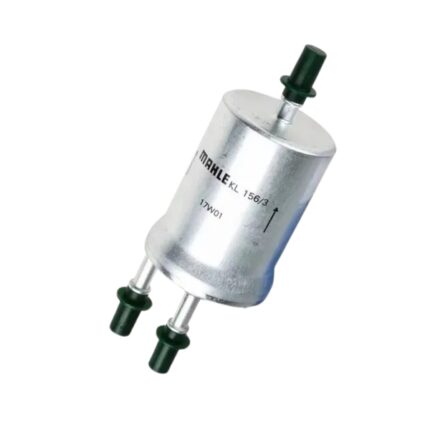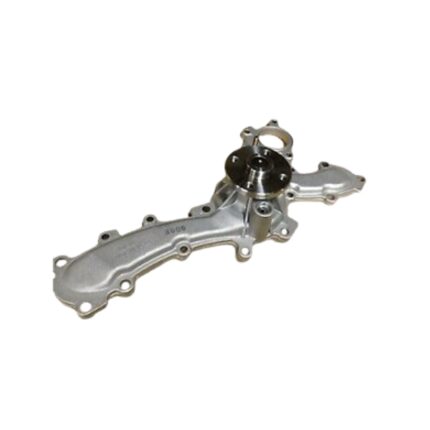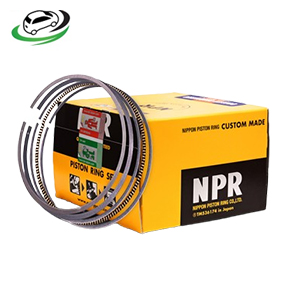Get Piston Rings Set For 1KD-FTV Engines SDT10175ZY-050
Piston rings are crucial components within an internal combustion engine. They are thin, circular rings fitted into grooves on the outer diameter of a piston. The primary function of these rings is to provide a seal between the piston and the cylinder wall, allowing the engine to maintain compression, control oil consumption, and dissipate heat effectively. In this 1000-word guide, we’ll explore the purpose, types, benefits, signs of wear, and maintenance of piston rings in great detail, along with their importance in the overall functioning of a vehicle’s engine.
Function of Piston Rings
Piston rings are essential to the proper operation of an engine, serving multiple key functions:
1. Sealing the Combustion Chamber
- Piston rings create a tight seal between the piston and the cylinder wall, which is necessary to maintain compression during the engine’s combustion cycle. This seal ensures that the fuel and air mixture is compressed adequately, leading to efficient ignition and power generation.
2. Controlling Oil Consumption
- Another vital function of piston rings is to regulate the amount of oil that lubricates the piston and cylinder wall. They scrape excess oil off the cylinder walls while allowing a thin film to remain, reducing friction and wear between the moving parts.
3. Heat Dissipation
- Piston rings help transfer heat from the piston to the cylinder wall, which then dissipates the heat through the cooling system. This is important because pistons experience extreme heat during combustion, and without adequate heat dissipation, they could expand and seize within the cylinder.
4. Preventing Blow-by
- Blow-by occurs when combustion gases escape past the piston into the crankcase. Piston rings minimize this by creating an effective barrier, ensuring that most of the combustion gases are retained within the combustion chamber for optimal power output.
5. Supporting Piston Stability
- Piston rings help stabilize the piston within the cylinder, preventing it from tilting or shifting under pressure. This stabilization ensures even distribution of forces and reduces wear on both the piston and the cylinder wall.
Types of Piston Rings
A standard piston ring set comprises different types of rings, each serving a specific purpose. The most common types of piston rings are:
1. Compression Rings
- Purpose: The primary role of the compression ring is to seal the combustion chamber and prevent combustion gases from escaping into the crankcase.
- Position: The compression ring is typically located at the top of the piston, closest to the combustion chamber.
- Materials: Compression rings are often made from cast iron or steel and may be coated with a hard material such as chromium or molybdenum to increase wear resistance.
2. Oil Control Rings
- Purpose: Oil control rings regulate the amount of oil that is distributed along the cylinder walls. They scrape excess oil from the cylinder surface, allowing only a thin film to remain for lubrication.
- Position: Oil control rings are usually located below the compression rings and often come as a set of two rings working together.
- Materials: Oil control rings are made from steel or cast iron and sometimes include grooves or holes that aid in oil distribution and drainage.
3. Scraper Rings (Intermediate Rings)
- Purpose: Scraper rings help regulate oil control and assist in sealing the combustion chamber. They act as a secondary barrier to prevent oil from reaching the combustion chamber.
- Position: These rings are positioned between the compression ring and the oil control ring.
- Materials: Scraper rings are usually made from materials similar to compression rings and may have an additional surface coating for enhanced durability.
Benefits of Piston Rings
Piston rings play a pivotal role in the engine’s performance, efficiency, and longevity. Some of the key benefits of well-functioning piston rings include:
1. Increased Engine Power
- Piston rings help maintain high compression, which is essential for efficient combustion. With proper sealing, the engine can generate more power from the fuel-air mixture, enhancing overall vehicle performance.
2. Improved Fuel Efficiency
- By maintaining optimal compression, piston rings reduce the need for additional fuel to compensate for inefficiencies. This leads to better fuel economy and lower emissions.
3. Reduced Oil Consumption
- Effective oil control rings minimize the amount of oil burned during combustion, leading to reduced oil consumption and fewer oil changes.
4. Prolonged Engine Life
- Piston rings reduce wear on the cylinder walls and piston by preventing direct metal-to-metal contact. This reduces friction and the risk of engine seizure, prolonging the engine’s life.
5. Efficient Heat Management
- By dissipating heat away from the piston, piston rings help the engine manage temperature effectively. This is crucial in preventing overheating, which can lead to severe engine damage.
Signs of Worn or Damaged Piston Rings
Over time, piston rings can wear out, leading to several engine problems. Common signs of worn or damaged piston rings include:
1. Blue Smoke from Exhaust
- If the piston rings fail to control oil effectively, excess oil may enter the combustion chamber and burn along with the fuel. This results in blue smoke from the exhaust, indicating oil consumption.
2. Poor Engine Performance
- Worn rings can lead to reduced compression, causing the engine to lose power, misfire, or run rough. You may notice a drop in acceleration and overall engine performance.
3. Excessive Oil Consumption
- Damaged piston rings may fail to control oil consumption, leading to the engine burning through oil more rapidly than usual. Frequent oil top-ups may be necessary.
4. Increased Blow-by
- If combustion gases escape past the piston due to worn rings, you may experience increased blow-by, where gases enter the crankcase, causing pressure build-up and oil leaks.
5. Poor Fuel Efficiency
- Worn piston rings reduce engine efficiency, leading to higher fuel consumption. You may notice a drop in miles per gallon (MPG) or frequent refueling.
Maintenance and Replacement of Piston Rings
Proper maintenance and timely replacement of piston rings are essential to ensure engine performance and longevity. Here are some key tips for maintaining and replacing piston rings:
1. Regular Engine Inspections
- Regularly inspecting the engine for signs of wear or oil leaks can help you identify piston ring problems early. Pay attention to any changes in engine performance, oil consumption, or exhaust smoke.
2. Compression Testing
- Compression testing is a diagnostic method used to check the condition of the piston rings and the engine’s ability to maintain compression. Low compression readings in one or more cylinders could indicate worn piston rings.
3. Replacement Intervals
- While piston rings are designed to last for a long time, they may eventually need replacement due to wear or damage. Consult your vehicle’s maintenance schedule or a mechanic for advice on replacement intervals, especially if you notice symptoms of piston ring wear.
4. Quality Replacement Parts
- When replacing piston rings, it is important to use high-quality replacement parts that meet the manufacturer’s specifications. Poor-quality rings may wear out quickly or fail to provide the necessary seal.
5. Professional Installation
- Replacing piston rings is a complex task that requires disassembling the engine. It’s best to have this work done by a professional mechanic to ensure proper installation and avoid potential damage to the engine.
Conclusion
Piston rings are vital components in an engine’s combustion process, playing a key role in maintaining compression, controlling oil consumption, and dissipating heat. They come in different types, including compression rings, oil control rings, and scraper rings, each serving a unique function within the engine. Properly functioning piston rings help improve engine power, fuel efficiency, and longevity, while signs of worn or damaged rings include blue exhaust smoke, poor performance, and excessive oil consumption. Regular engine inspections, compression testing, and timely replacement of piston rings are essential to maintaining the overall health of your vehicle’s engine.
Understanding the role and maintenance of piston rings is crucial for any vehicle owner, as these components ensure the smooth and efficient operation of the engine. By keeping an eye on signs of wear and addressing issues promptly, you can enjoy better performance, lower fuel costs, and longer engine life.
Follow us on Facebook for more parts.




Reviews
Clear filtersThere are no reviews yet.